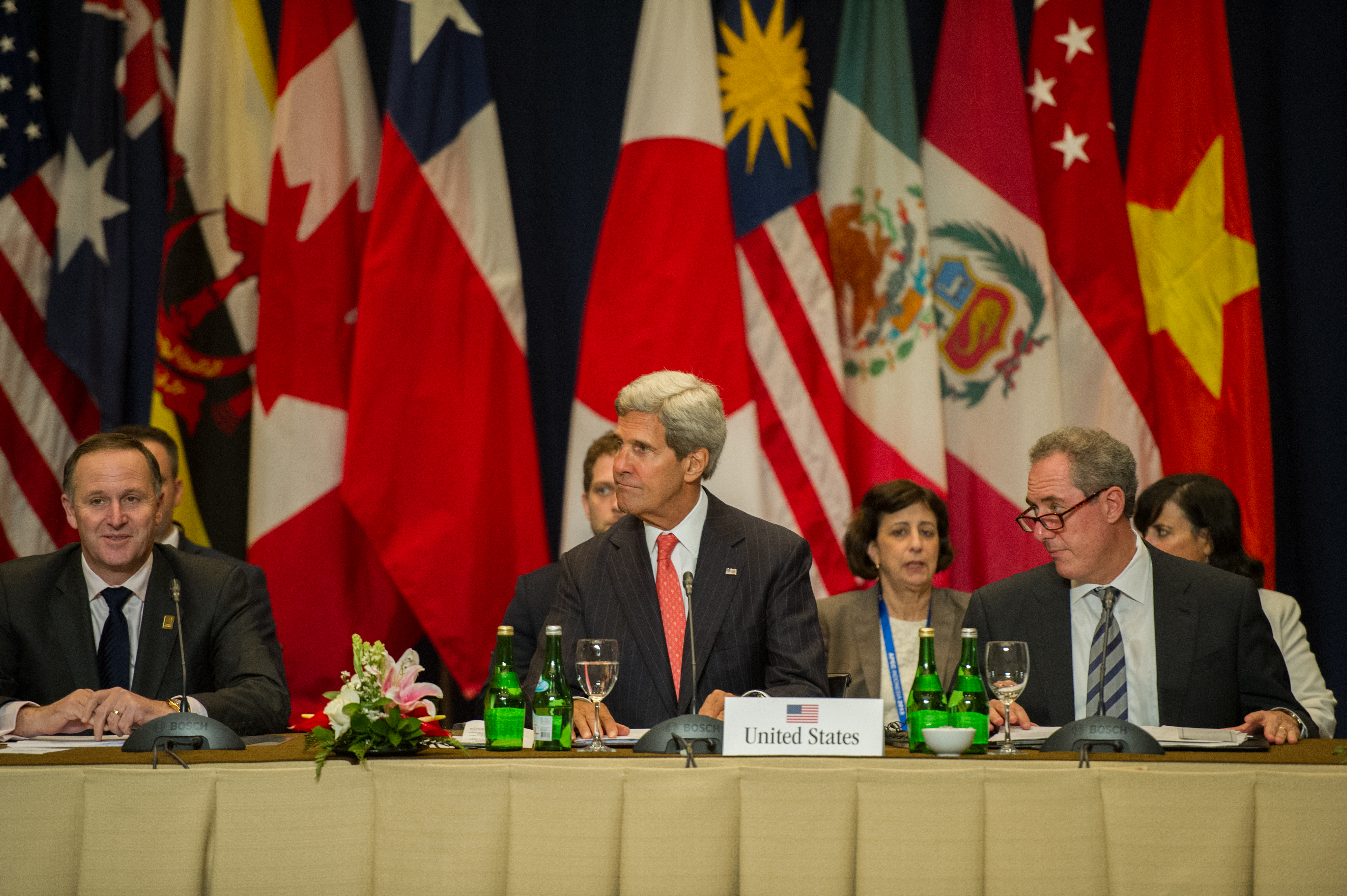By Graham Duncan, Contributing Writer
The Trans-Pacific Partnership (TPP) is a multilateral free trade agreement between the United States and 11 other nations in the Pacific, including Japan, Malaysia, Mexico and Canada. The 12 countries involved in the deal account for 40 percent of the world’s GDP and one-third of world trade, according to the New York Times. The deal, once the respective countries approve it, could create a single market in the Pacific much like the market in Europe. The TPP will cover a broad range of goods and services, such as financial services, telecommunications and copyright protection laws. This single market created by the TPP produces a trade association among the 12 member countries that is characterized by a reduction or complete removal of trade restrictions and tariffs.
The most notable part of the agreement is that it excludes China, the largest market in the Pacific region. U.S. Economy expert for about.com Kimberly Amadeo believes this deliberate exclusion is meant to balance the trade dominance of China in East Asia; however the U.S. has said that it will accept China into the agreement if it is will to comply with TPP regulations.
On Oct. 4, negotiations between the countries concluded after years of work. While the Trans-Pacific Partnership has left the negotiation table, its fight is just beginning as the final proposal will be sent to each country’s legislature for approval. Each of the 12 potential member countries will have a chance to debate and approve or reject the proposal. Political analysts say this upcoming debate will be the toughest part for the TPP in the U.S. The deal has to win Congressional approval for the U.S. to be a part of the deal. Opposition on both sides of the political aisle is mounting.
Democratic presidential candidate Bernie Sanders issued a statement calling the trade deal “disastrous” and that “it’s on us to stop it from becoming law.” The other prominent Democratic candidate, Hillary Clinton, who supported the trade talks as Secretary of State, has expressed her wariness regarding the deal. Donald Trump, the prominent Republican presidential candidate, has also expressed his disapproval of the TPP saying that it is a bad deal for American workers whose jobs may be shipped overseas. TPP supporters argue that the agreement will benefit American workers by making it easier to sell American goods to other countries.
According to the U.S. Trade Representative, the executive agency responsible for developing and recommending U.S. trade policy to the president, the TPP is potentially a strong source of economic growth for the U.S. and all countries involved in the plan. According to the USTR, the TPP will add $77 billion a year to workers’ incomes in the U.S. alone, and an addition $223 billion a year to workers in the other member countries. Supporters say the TPP gives the U.S. a network of partners in East Asia through which the U.S. can operate to counter China’s power, not just economically, but also militarily in the region.
By law, Congress will have months to deliberate and debate the proposal; however, if President Obama officially notifies Congress that he intends to sign the accord, then Congress will only have 90 days to consider it before it is signed. Congressional and administrative officials have said that additional time will be needed to discuss fully the proposal. According to the New York Times, the earliest anticipated date for a decision is April 2016.


